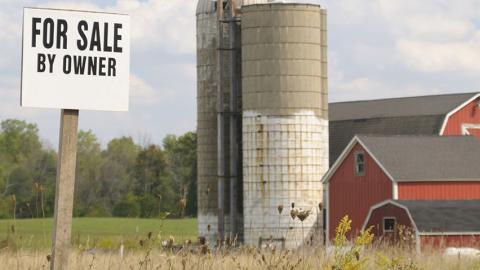USDA's Economic Research Service (ERS) compiles several measures of the economic well-being of farm households using data from USDA's Agricultural Resource Management Survey (ARMS). The well-being of farm operator households is determined by a combination of onfarm and off-farm activities. ARMS-based indicators of economic well-being focus on the households of principal operators of family farms (see glossary for definitions of farm types).
There are two data collections that contain detailed current year and historical information on farm household income and well-being:
- A set of Excel tables, Farm Household Income and Characteristics, includes tables relevant to the economic and demographic situation of farm households.
- The ARMS Farm Financial and Crop Production Practices data tool offers reports on the farm operator household income and balance sheet.
Farm operator household well-being is not equivalent to the financial performance of the associated farm business or of the farm sector generally. Several stakeholders in addition to farm operators, such as landlords and contractors, have a claim on the net value that agriculture adds to the economy. In addition, farm operator households often have nonfarm investments, jobs, and other links to the nonfarm economy. Key indicators of economic well-being reported here include:
Income
- Farm-operator households receive income from farm and off-farm sources. Onfarm sources, or income from the farm business, are determined by farm costs and returns, based on prices of inputs and outputs. These costs and receipts often vary from year to year, with many farm households reporting negative farm income in any given year. Off-farm sources, including wage income, nonfarm business earnings, dividends, and transfers, are the main contributors to income for most farm operator households in the United States, including the majority of residential and intermediate farm households (see glossary for definitions). These households, which derive less than half their income from farming, are not as affected by changes in farming costs and returns as are large commercial farms but may be more susceptible to changes in the broader economy. See the chapters on Farm Household Income Forecast and Farm Household Income Estimates for more information.
Wealth
- The net worth of a farm household is the sum of all farm and nonfarm assets, less farm and nonfarm debt. Most farm household assets are farm assets, and of those, the majority is the value of farmland owned by the farm operator household. See the chapter on Income and Wealth in Context for more information.
Health Insurance
- Many farm households involved in certain commodity specializations do not have health insurance coverage. Compared with U.S. households in general, a slightly smaller proportion of farm households have health insurance. See the chapter on Health Insurance Coverage for more information.



